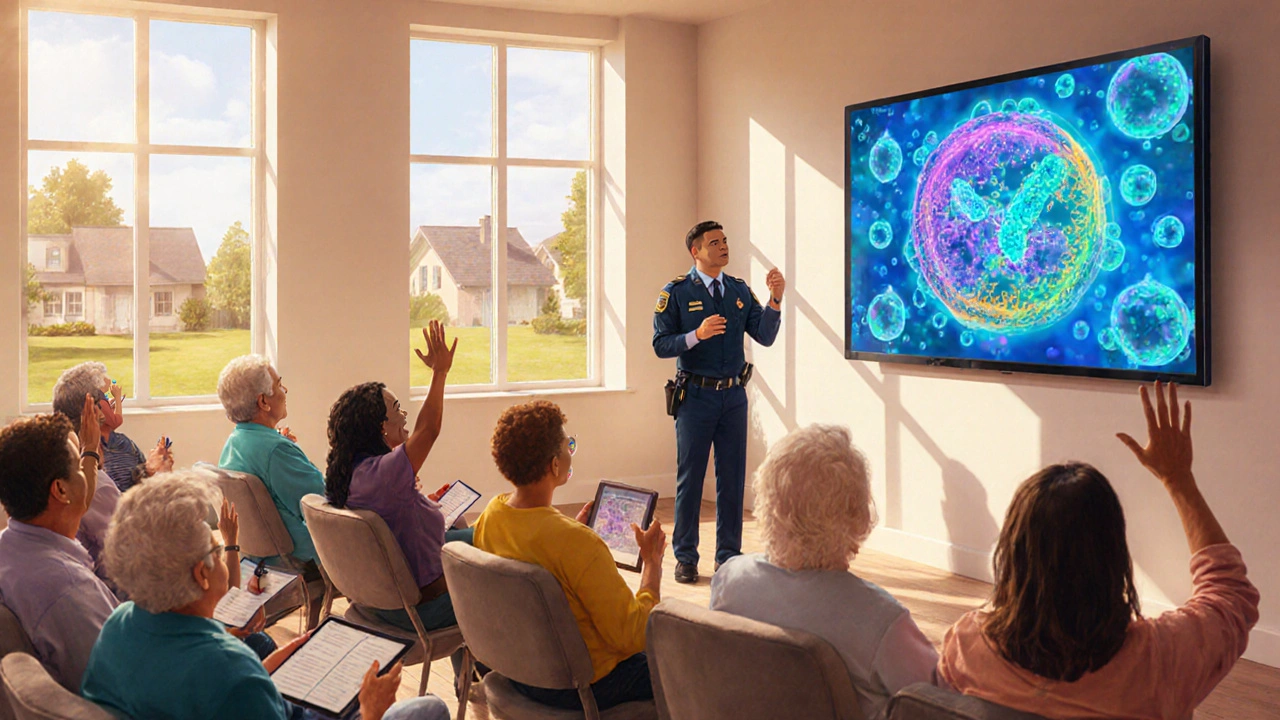Legionella – What You Need to Know
When dealing with Legionella, a group of Gram‑negative bacteria that thrive in warm freshwater and engineered water systems. Also known as Legionella pneumophila, it is the primary cause of Legionnaires' disease, a severe form of pneumonia that can erupt from cooling towers, hot tubs, and complex plumbing networks. The link between the bacteria and the disease forms a classic cause‑and‑effect relationship: Legionella causes Legionnaires' disease, and the infection spreads when aerosolized water carrying the pathogen is inhaled. Water system contamination, often unnoticed in large buildings, creates the perfect breeding ground when temperature stays between 20‑45 °C, biofilm forms, and stagnation occurs. Prevention therefore requires routine water system maintenance, including temperature control, regular flushing, and disinfectant dosing, because a clean system removes the habitat that fuels bacterial growth. Diagnosis hinges on the urinary antigen test, a rapid assay that detects Legionella antigens in a patient’s urine, supplemented by sputum culture and PCR when the picture is unclear. Early detection matters; the sooner the infection is identified, the quicker clinicians can start targeted antibiotic therapy. Current guidelines recommend macrolides such as azithromycin or fluoroquinolones like levofloxacin, which both penetrate lung tissue effectively and curb bacterial replication. Understanding these connections—bacteria to disease, contamination to risk, testing to treatment—helps patients, facility managers, and healthcare providers break the chain before it escalates.
Key Areas to Watch
Beyond the basics, several related topics shape how we manage Legionella risk. Cooling tower monitoring, for example, is a critical control point because towers release massive volumes of aerosolized water into the atmosphere; regular sampling and biocide treatment reduce outbreak potential. Legionella risk assessments combine engineering data, occupancy patterns, and historical infection rates to pinpoint vulnerable zones, allowing targeted interventions rather than blanket measures. When an outbreak does occur, environmental sampling of water outlets provides concrete evidence of bacterial load, guiding remediation steps such as hyperchlorination or thermal shock. Public health agencies also stress the role of education and training for maintenance staff; understanding how biofilm forms and how disinfectants work empowers them to act proactively. Finally, emerging technologies like rapid PCR kits and IoT‑enabled temperature sensors are reshaping detection and prevention, offering near‑real‑time alerts that can stop an outbreak before anyone gets sick. The articles below dive deeper into each of these facets, giving you practical tips, the latest research findings, and step‑by‑step guides to keep Legionella at bay.
Why Public Awareness and Education Are Critical for Preventing Legionnaire’s Disease
Public awareness and education are key to stopping Legionnaire's disease. Learn how informed communities, clear communication, and targeted programs reduce outbreaks and save lives.
Read more
